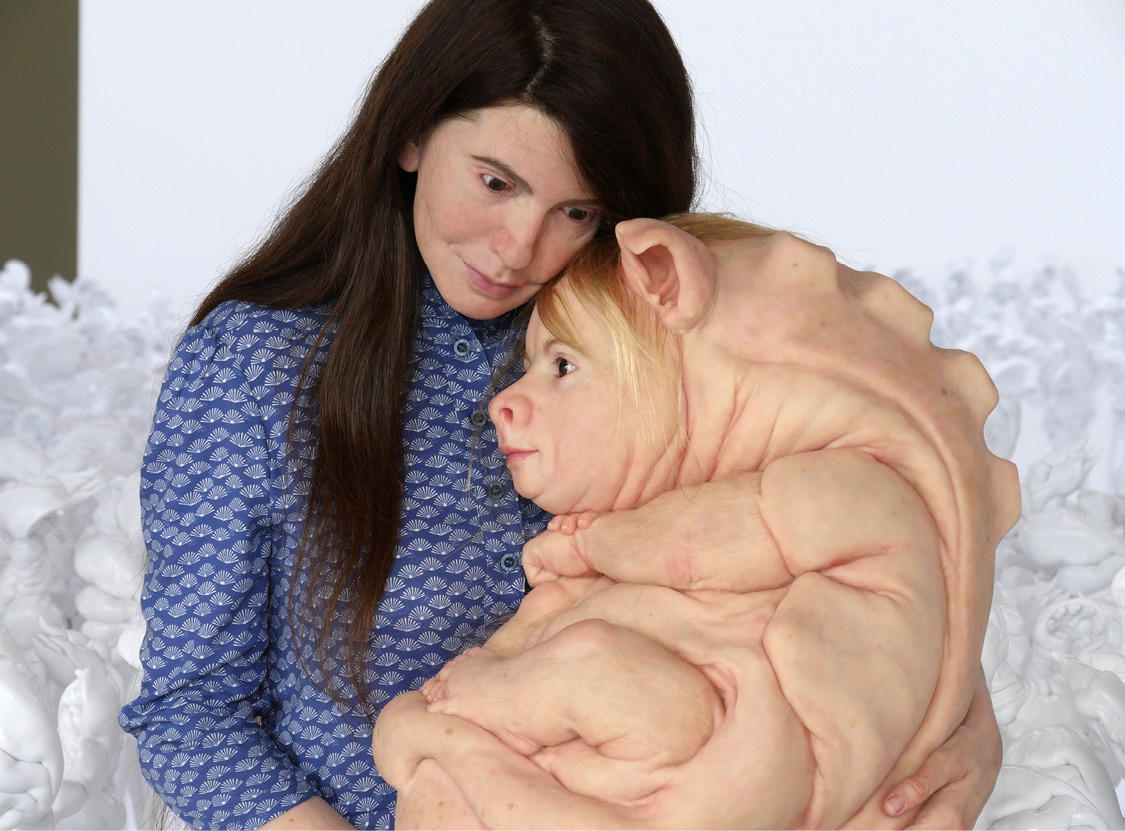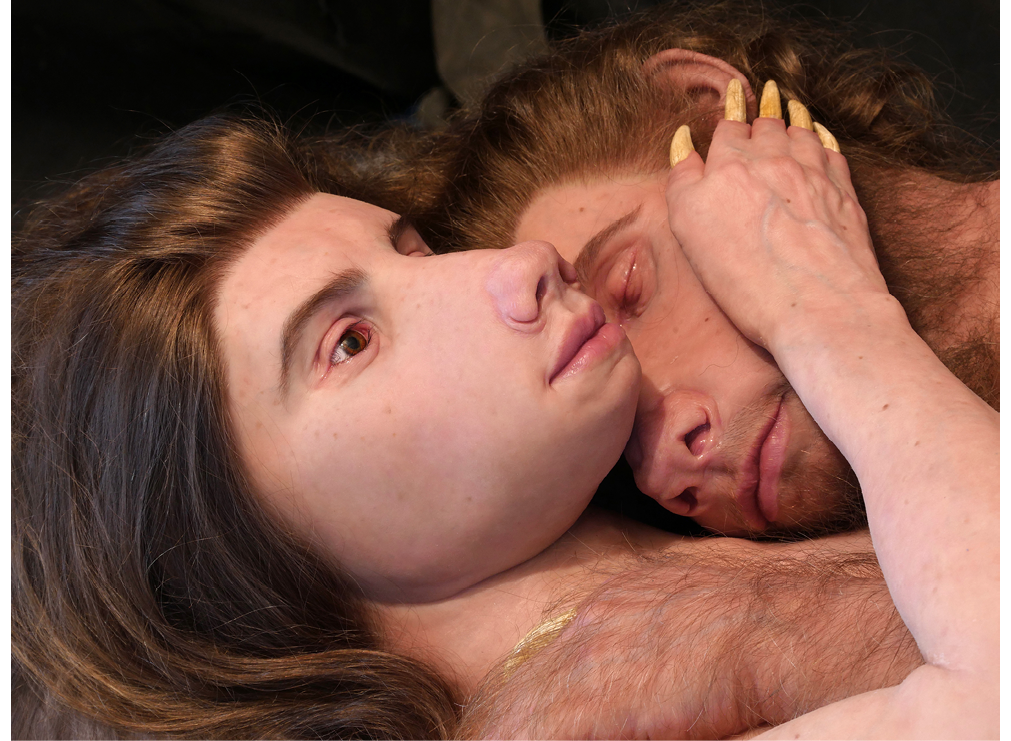“Inter-Natural,” the title of Patricia Piccinini’s solo exhibition, links two ideas, “inter” implying spaces between, and “natural” the realm of unspoiled nature. For over two decades, the Australian artist has been exploring just this liminal space, where nature meets nurture in biology lessons that are part obstetrics, part Frankenstein’s lab.
Entering the gallery, the first encounter, Unfurled (2017), is dramatic. A young girl in a blue denim dress sits, legs tucked under, in an upholstered chair. Her startled expression is echoed by that of a large tawny owl, perched on her shoulder. These figures are disarmingly lifelike, and one remains on edge, half-anticipating them to spring into motion. The hyper-realist sculptures of Duane Hanson, similarly unnerving, may certainly come to mind.
Throughout the exhibition, Piccinini returns to themes of fertility, sexuality and emotional attachment. She displays a particular obsession with the primal relationship that exists between mothers and children. In The Bond (2016), this devotion transcends obstacles up to and including difference in species. Here the “baby,” appalling yet endearing, has a human face, albeit with enlarged nostrils, seemingly runny nose, moist lips, wisps of blond hair trailing across its forehead. Rolls of baby fat under the chin morph into a grotesquely flabby, misshapen body. One’s mind may race to construct a backstory, envisioning scenarios in which such beings might actually gestate and come to life. Perhaps not so far off: while transgenic animals—ones genetically modified through recombinant DNA technology—have been around since the 1970s, it was just in 2018 that Chinese researchers announced the creation of the first genetically modified human embryo, causing quite an uproar over the ethical and moral implications.

Patricia Piccinini, The Couple (detail) (2018), courtesy of the artist and Hosfelt Gallery, San Francisco.
Most striking, and intimate, is the tour de force installation The Couple (2018). The viewer enters a large tent to find a humanoid pair embracing on a small cot, beneath a sleeping bag. Both figures have elongated faces and snout-like noses, suggesting muzzles. Their fingers and toes bear wicked talons. The male, with profuse reddish hair, and a bit like a werewolf, nestles in the crook of the female’s neck. Her eyes are wide open, with a preoccupied look. One may identify strongly with the creatures, with their failure to fit in, a potentially tragic circumstance. But in Piccinini’s world, perhaps the human beings are the monsters.
The Naturalist (2017), resembling a small sea lion, features tiny feet joined at the base that splay to form flippers. These minute appendages may evoke disturbing thoughts of the practice of footbinding. Perhaps the resemblance is unintentional, yet the impact of man’s persistent desire to “improve” his fellow beings, often those who are powerless to object, lies at the heart of the matter. Clearly, among the numerous challenging issues raised in Piccinini’s work are ones of standards of beauty and cultural acceptance, her resilient mutant models consistently triumphing over adversity. In a more homogeneous future, perhaps the sci-fi dilemma of inter-species or anti-cyborg prejudice may someday become a fact of life. Piccinini’s remarkable work certainly makes such a vision believable.


